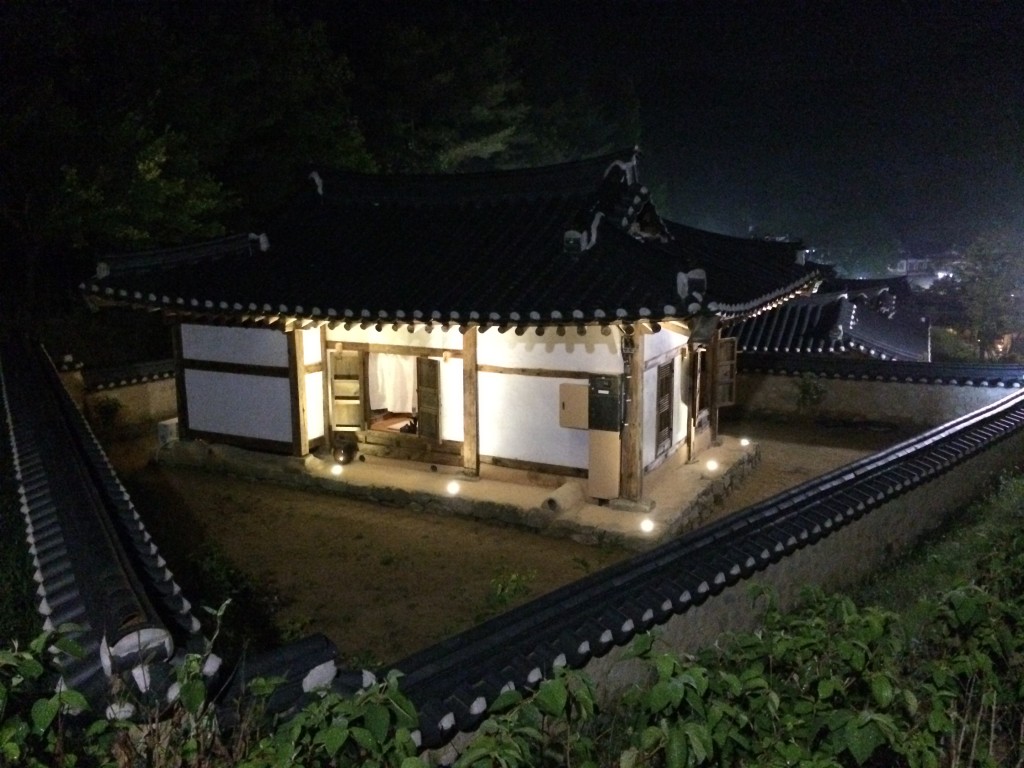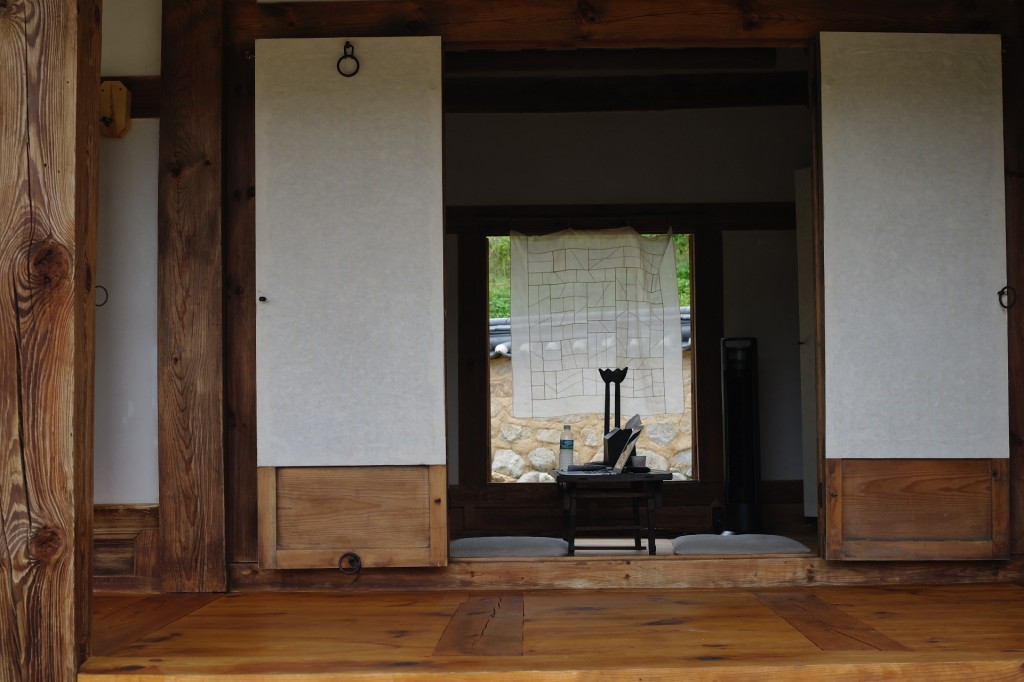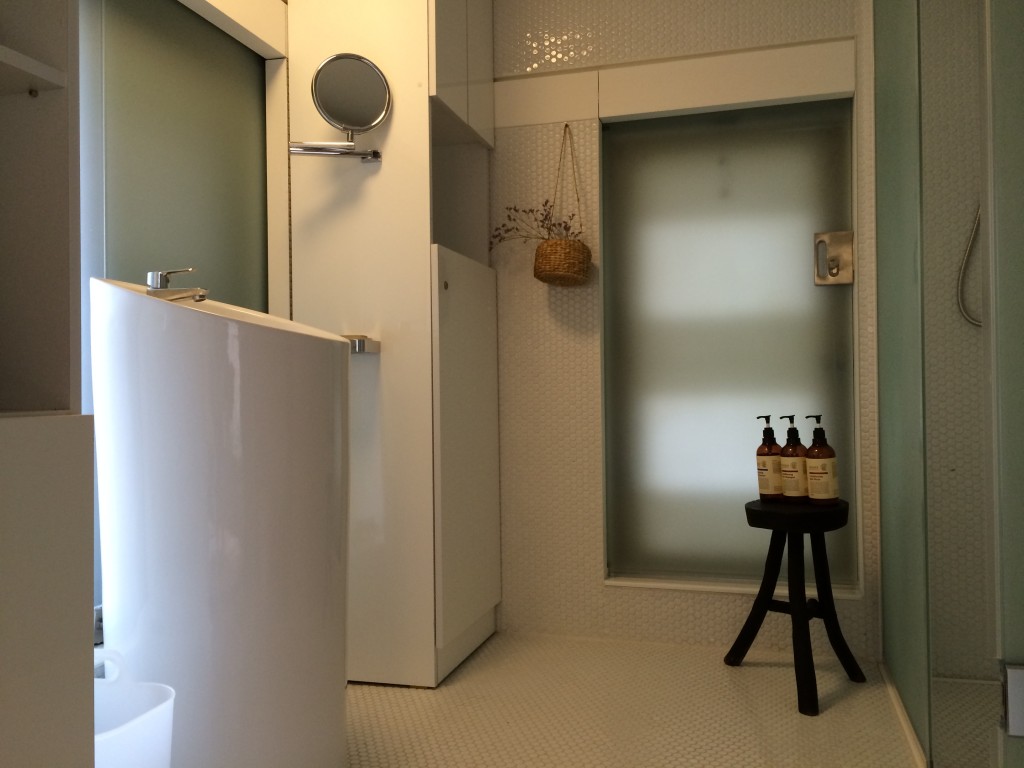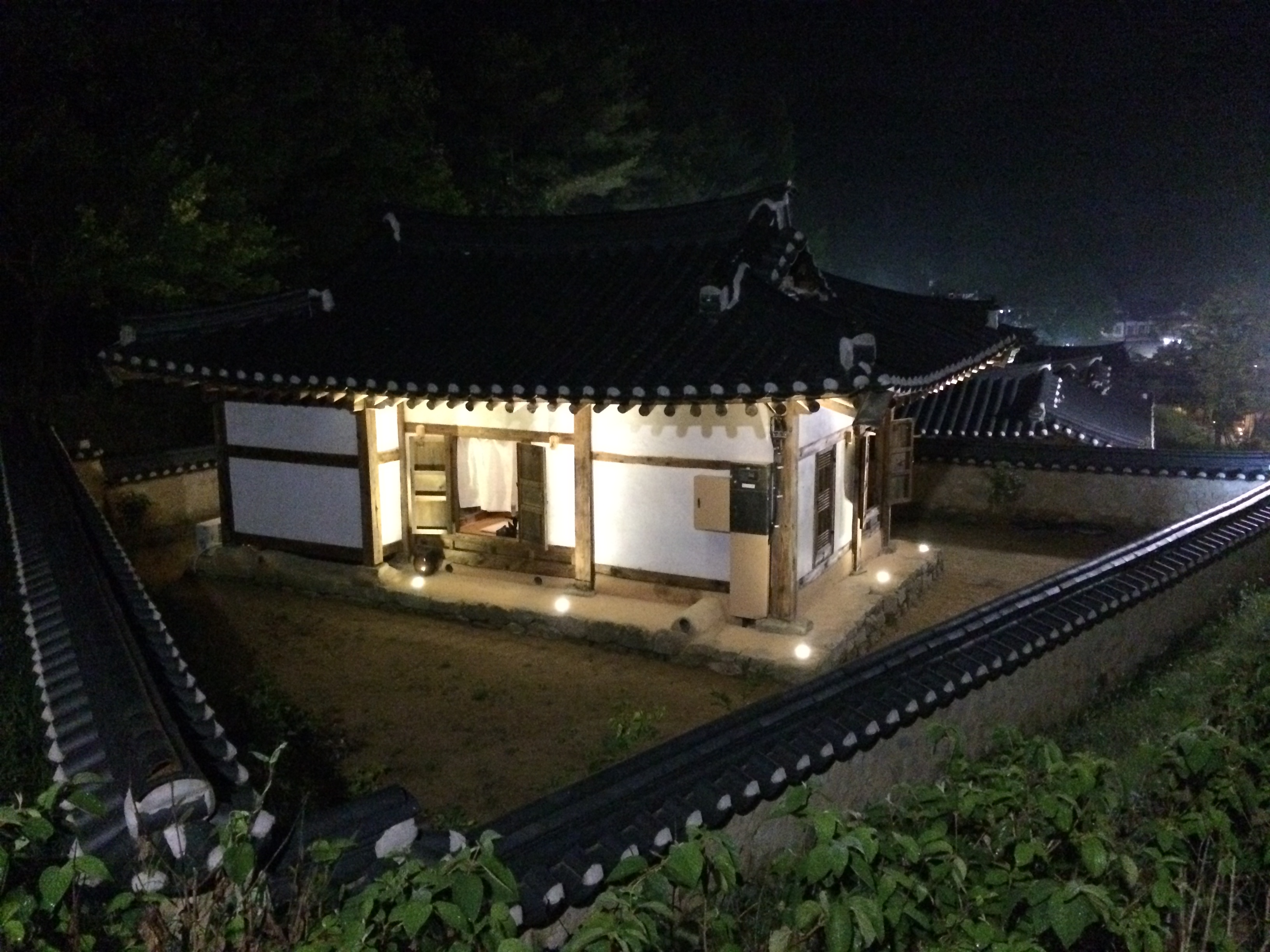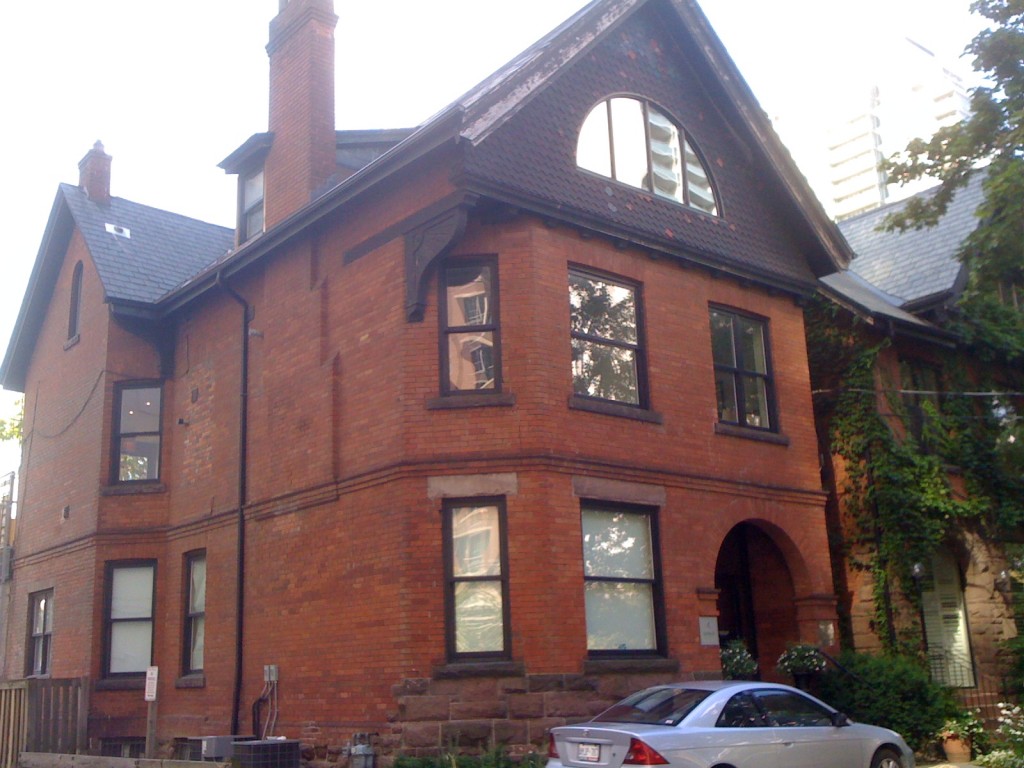
Toronto has many traditional buildings with a modern twist. The house previously used for Rotman Designworks studio was a good example. From the outside, it was a plain three-story house. However, it had interesting modern flavors inside: boards were installed on the white walls, desks and chairs ran on wheels, and newly installed toilette were clean.
I searched for compatible Korean examples for the past couple of years and finally found a right one. It is a small resort called Gurume (“into the clouds” in Korean). It opened July in 2014 at Andong, about 4 hours drive from Seoul. Kimchimari, a blogger, said
it consists of 7 different historical Korean homes with their ages ranging from 200-400 years old. Each home has been relocated from their original location to the resort as vacation villas for people to experience first hand how Korean scholars lived centuries ago.
I stayed a night at one of the historical Korean homes and enjoyed its traditional – and modern aspects. As for the traditional aspects, I enjoyed the rich scent surrounded by the wood materials, cool breeze naturally created through the middle space of the house, and the soothing sounds from the nature with the super-bright moon shine at night. As for the modern aspects, I loved everything about bathroom; a newly installed basin, a shower with high water pressure, and the Aesop shampoo. I found that although I want to travel in the past and enjoy tradition, I do not want to sacrifice the convenience the modern society provides. When marketers and designers aim to create a unique experience either by putting nostalgic flavor to the common products or by adding modern twist on the historically preserved concepts, they should focus on how modernity can eliminate inconvenience.
